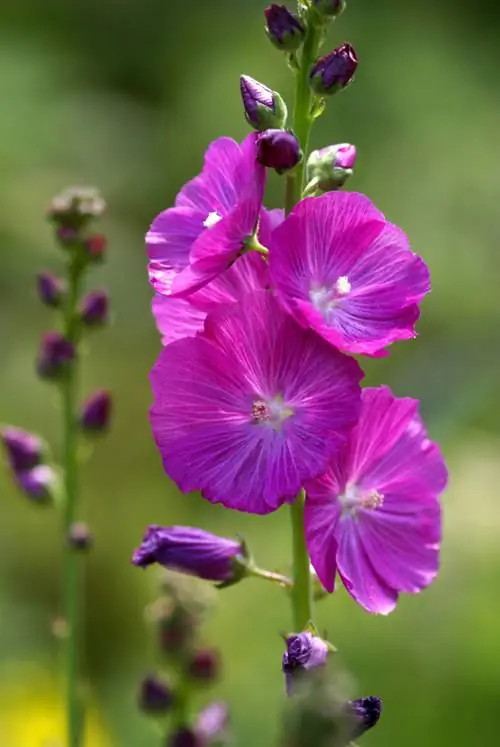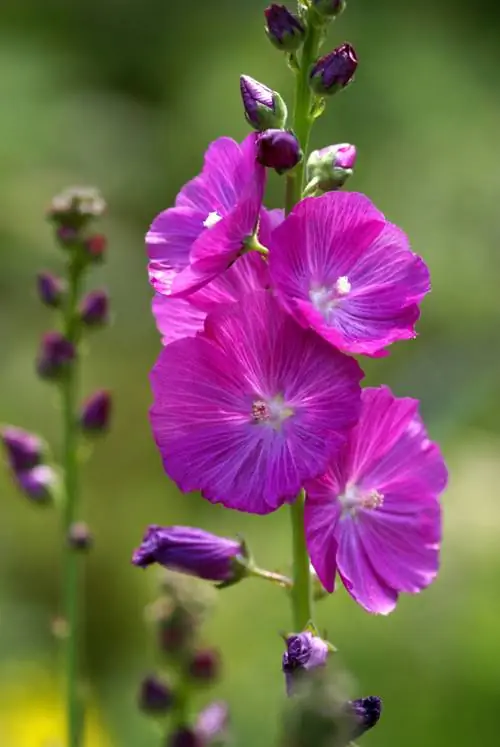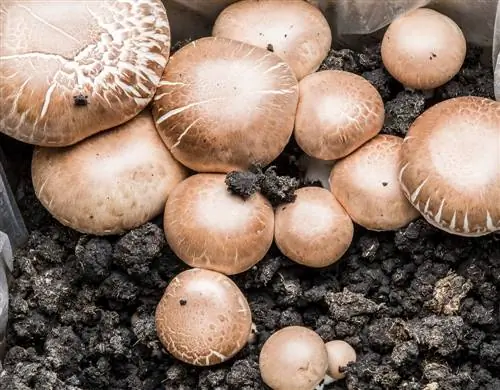- Author admin [email protected].
- Public 2023-12-16 16:46.
- Last modified 2025-01-23 11:20.
They are the reason why many gardeners plant mallow in their garden. Whether Mauritanian mallow, cup mallow, beautiful mallow or another type of mallow - they all have visually appealing flowers.

Are mallow flowers edible and what are they good for?
Mallow flowers are edible, taste mild and sweet and can help with complaints such as coughs, sore throats, hoarseness, bronchitis, gastrointestinal inflammation, heartburn and constipation. They appear in different colors such as white, pink, light purple, purple or red.
When do they appear?
The mallow flowers appear at different times depending on the species and variety. There are mallows that bloom as early as the end of May. Others present their flowers from June and others from July. The flowering period can last until September.
While some species only bloom for two weeks, others bloom for four weeks or longer and are easy to replant after the old flowers are removed (form new flower heads/re-bloom).
What do they look like?
Each mallow flower is white, pink, light purple, purple or red. The flowers grow singly or in clusters in the leaf axils - usually in pairs. Some species have up to four flowers in each leaf axil. All mallow flowers have the following characteristics in common, among others. They are:
- hermaphrodite
- fivefold
- cup-shaped
- wide open
- radially symmetric
Are they edible?
Mallow flowers are not poisonous, but edible. They taste mild, delicately sweet and pleasant. Their high mucilage content has a positive effect on the body. Therefore, you can buy so-called cheese poplar tea in pharmacies. This is a tea made from dried flowers and/or leaves of wild mallow.
In order to preserve the flowers, you do not necessarily have to overwinter your mallow. Freshly grown from seeds in spring, the flowers emerge in summer. These help with:
- cough
- Sore throat
- Hoarseness
- Bronchitis
- Inflammation of the gastrointestinal tract
- Heartburn
- Constipation
Tips & Tricks
The flowers of the hollyhock or hollyhock are less tasty. They are coarse and melt less on the tongue when chewed than the flowers of other species.






